In the U.S., over 100 different companies work together to produce, among other things, one of the country's most loved products: peanut butter. Evidence suggests that this nutty commodity is consumed by over 290 million Americans, which means that the peanut industry is a very profitable business. So, how do all these companies come together? The industry is segmented into specific parts of the chain, from producers to shellers, to manufacturers, then down to the individually connected product and service companies. Each part of the chain is subdivided further to offer more support to the process, and each of these is managed by various associations that have been set up to create rules and regulations to ensure quality. There are some that are there to represent the individual manufacturing sites. The peanut industry is held up to stringent standards, which make sure that all parts of the chain adhere to handling standards for all peanuts—whether produced domestically or imported.
The peanut supply chain is a complex system with many moving parts, all of which need to work together to create peanuts for the consumer. The industry is so large that there is an American Peanut Council (APC) which protects the U.S peanut supply chain by making sure that there is a safe and adequate supply of high-quality oilseed peanuts and other peanut products.
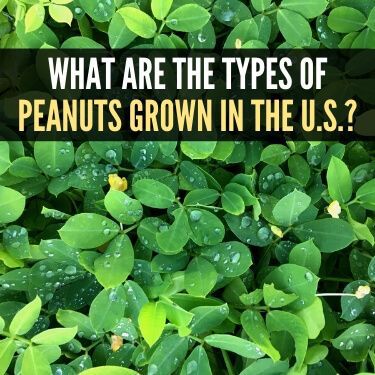
The U.S peanut industry produces four main basic types of peanuts. These are the Virginia, Runner, Spanish, and Valencia Peanuts. They are all very distinguishable from each other due to their size, color, and flavor.
There are around 7,000 peanut farmers growing peanuts commercially in the major peanut producing regions of thirteen states. Of these thirteen states, six are major producers: Georgia grows over 44% of the total, Texas over 13%, Alabama over 11%, Florida over 10%, North Carolina over 7%, and South Carolina accounts for over 4%. All the other seven states combined produce around 10%.
The Virginia Peanut accounts for around 10% of the total amount of peanuts consumed in the U.S, and they are grown in Virginia, perhaps as you would expect, but also in North Carolina, South Carolina, and West Texas. The Runner Peanut by far accounts for the largest amount by volume produced in the U.S at 85%, and they are grown in Georgia, Alabama, Florida, Texas, and Oklahoma. Spanish Peanuts only account for 2% of the total U.S production and are grown in New Mexico, Oklahoma, and Texas. The last type, the Valencia Peanut, accounts for only 1% of the production market and are grown primarily in New Mexico.
Need help with freight shipping from South Carolina to Texas or even freight shipping from Virginia to Florida? Manage your peanut supply chain with an expert transportation partner.
Many people believe that the peanut is a nut that grows on a tree. However, this is actually not true. In fact, a peanut is classed as a legume. It is more like the pea. A legume is an edible seed that is enclosed in a pod. Legumes are one of the plant world's best sources of concentrated protein. The peanut plant has yellow flowers that are self-pollinating. ‘Pegs’ begin to grow out of the plant to form a stem which is then forced into the ground. This is where the peanut emerges. A single peanut plant can create around 40 peanuts.
It takes around four to five months for the peanut to grow and mature, then farmers harvest them in the fall between September and October. The weather during harvesting can have a big impact on the quality of the overall peanut crop. A combine machine is used to take the peanuts off of the vines, and once they have been taken out of the ground, they are left dried out in the sun for two or three days. The peanut farmer then sells the peanuts to sheller companies.
Peanuts aren't the only nut on the move. Learn more about shipping from Georgia pecan farms.
The Virginia Peanut is the largest peanut. It is a very popular peanut and accounts for the majority of peanuts that are roasted or eaten as in-the-shells. It can sometimes be referred to as the ballpark peanut as it is generally the peanut used for gourmet snacks, so it is high-quality. It is a large peanut. It has a crunchy texture, and it is flavorful with a very distinctive taste and is jam-packed full of nutrients that are vital for a healthy life. Once this commodity has gone through the shelling process, they can be salted or flavored and sold on.
Runner Peanuts are the most dominant type of peanut grown in the U.S peanut production market. They are the type of peanut predominantly used in the making of peanut butter and used in peanut candies and snack nuts. They have an attractive uniform kernel size, which means that they are able to be roasted in an even manner. They have consistently high yields, which makes them dependable too. They became popular in the 1970s when a new variety known as the Florunner was introduced into the market, which skyrocketed the U.S peanut producing capabilities.
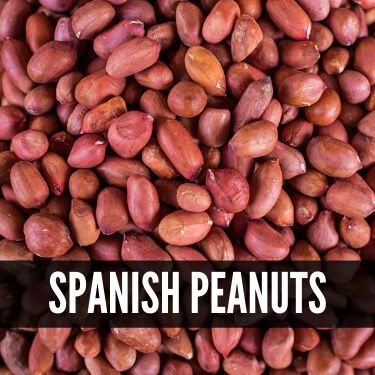
The Spanish Peanut is renowned for its attractive red skins and for being the nuttiest flavor peanut once it has been roasted. That is due to the fact that it has one of the highest oil contents of all peanuts. The higher oil content also means that it is a variety that is good for crushing to extract oil from too. The Spanish Peanut has a smaller sized round kernel, and this type is used for the most part in peanut candies. However, they are used as salted peanuts and to produce peanut butter too. It is also high in oleic acid, which is a beneficial monounsaturated fatty acid.
The Valencia Peanut usually has three or more kernels to each pod or shell. It boasts a sweet flavor, which makes it a great type to be used in all-natural peanut butter products. They are also a fantastic variety to be sold as boiled peanuts. However, due to the flavor, they are generally roasted and sold in the shell.
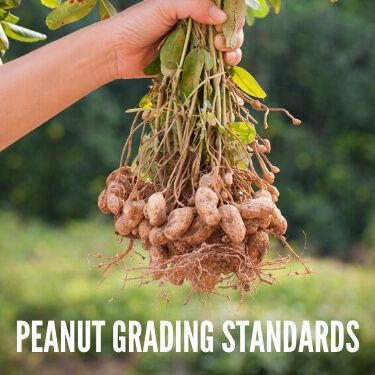
Once the harvested peanuts have gone through the curing process to dry them out, all the farmers stock peanuts, meaning unshelled, uncleaned, and uncrushed, need to be inspected and graded. This process is to ensure that quality standards are met, to prove the value of the peanuts produced.
The grading process is usually performed by the Agricultural Marketing Service of the U.S. Department of Agriculture (USDA/AMS). A pneumatic sampler is set up at shelling plants or buying stations, which are typically located only a few miles away from where the peanuts are harvested. The sampler takes a sample of the peanuts off of the drying wagon and inspects for various factors.
First off, when the peanuts are harvested, they may contain a wide range of non-peanut related material, such as dirt, rocks, sticks, etc., so, the machine determines the foreign material content. A high concentration of foreign material may mean that the airflow is restricted and may prevent the peanuts that are high in moisture from drying out once stored. Depending on the type of foreign material, that may determine how the peanuts are cleaned using various specialist machines. Other than foreign material, the pneumatic sampler also checks for pod size, damaged kernels, kernel moisture content, and it also works out the meat content too.
Here are the Runner Peanut grading standards as an example:
Virginia Peanuts are graded as either:
The grading process creates a commercial value, and it is generally used as a way to negotiate on price. This process also determines how suitable the peanuts are to enter the food chain.
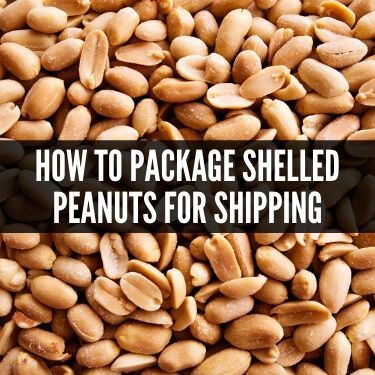
Peanuts that are to be shelled are, first of all, cleaned so all the foreign material is removed. They are then dropped to a conveyor belt, which moves them to the shelling machines. They are then forced through perforated grates into slotted drums, which contain screen meshes with various different sized openings. The drums are rotated, and this movement causes the peanuts to collide against each other and break open, letting the kernels out. Gravity and rotation allow the kernels to fall through the screens, eventually staying in their respective place depending on size. The newly shelled peanuts are cleaned again, and the kernel is sized, graded, and packaged for the market.
Shelled peanuts are generally packaged up in polysacks between 50 and 60 kg in weight. Each lot or bag of shelled peanuts will be given a PLI a Positive Lot Identification. For the domestic market, the lot of shelled peanuts are given a PLI sticker, and tags or seals will be applied to every bag, pack, or container. If the peanuts do not meet the required standard, they may need to be blanched. Then the blanched peanut kernels are usually bagged up in 50 kg polysacks. The polysacks are generally placed on pallets and wrapped in PLI tape. They are shrink-wrapped, and PLI stickers will be placed over this wrapping. Doors inside the container may be sealed to isolate the packages.
The lot size for the shelled peanuts must not be over 200,000 pounds. There are specially made bulk containers that are used for the movement of peanuts. All seals are checked before the product is loaded. The handler also does a visual inspection for any tampering.
If the shelled peanut is going to be used to produce peanut oil or peanut butter, they are usually transported loose in bulk.
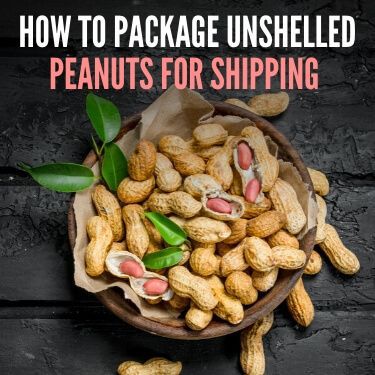
Unshelled peanuts are cleaned to remove any foreign material. Then they are usually packaged up in polysacks containing quantities of 25 to 30 kg. They may also be packaged in 10 kg cartons. In order to be shipped, the bags have to have the PLI sticker on them. No shipping company will move them without it.
Like their shelled counterparts, they will be loaded onto specially made containers, on pallets, after having been shrink-wrapped, and had the appropriate PLI stickers tags, seals etc., placed over them. The sticker means that the lot has been quality assessed; there is no mold, for example. There is less than 2% damage to them and less than 10% moisture, and less than 0.5% foreign material. Without these stringent rules and regulations being adhered to the product, it will not be shipped.
In order to store peanuts correctly, there are a number of factors that have got to be taken into account. The storage facility has to meet the regulation standards, first of all, in terms of cleanliness, and it has to be appropriately designed to allow for good sanitation practices and standards. The facility needs to be able to prevent cross-contamination and has to be able to fight against any degradation and decay of the products.
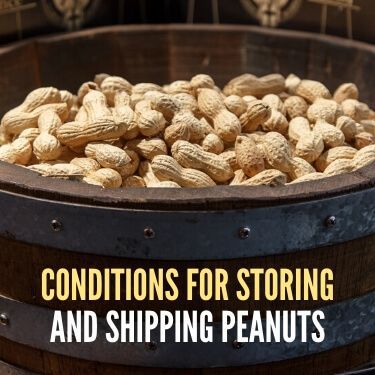
There has to be storage facility inspections every day. If a shipment comes in with any signs of rodent dropping, or indeed any rodent activity, it has to be immediately rejected. If an incoming shipment shows any sign of insect activity, it also has to be rejected. In this case, there may be some scope to fumigate the shipment depending on the activity seen. Any insecticides placed in cracks or crevices must only be done so by a qualified expert.
The staff who work for the storage companies must adhere to strict rules such as sticking to the designated smoking and dining areas, for example. The lighting used in the storage facility must not be made of glass or brittle plastic that can break and fall into the product, which will contaminate it. The lighting, therefore, has got to be specially made safe light bulbs. There has got to be a stringent maintenance program to the storage facility. The grass has to be cut regularly, and weeds need to be kept at bay. There has also got to be a litter picking program to make sure there are no grounds for rodents to live. Birds also need to be seen off, which means that any signs of nesting need to be cleared away as soon as possible. Bird droppings need to be cleaned up straight away.
Inside the facility, the temperature needs to be kept between 34 to 41 degrees Fahrenheit. Humidity needs to be between 55% to 70%. It is recommended that all peanut storage facilities have a chart that is updated daily or weekly, indicating the temperature and humidity levels. There has to be an adequate level of air circulation to ensure that the temperature is uniform throughout the storage facility when all the doors are shut. There need to be thermometers placed at various locations throughout the interior of the facility to ensure that the air circulation is working to ensure the temperature. Where refrigeration equipment is utilized, there has to be a drip pan to collect any moisture that may condensate and fall as a result of this process.
The warehouse has to abide by certain regulations, such as an 18-inch gap that needs to exist between the interior wall and the product so an inspection can occur. To avoid any kind of infestation from any animal or insect, the doors have to be sealed, and the seals need to regularly checked for quality. The walls also need to be free from cracks or holes, and if any are seen, they need to be repaired immediately.
An inspection needs to be done on the pallets, to ensure that they are still in good condition, i.e., no splits, or nails are breaking through, which could potentially damage the product. The product cannot be in contact with walls, or ceilings, or pillars. If a container is leaking, it needs to be repaired as soon as possible, and any product that has fallen onto the floor has to be cleaned up. The general rule of thumb is first in first out to avoid any product being held too long.
In the transportation process, containers need to be ventilated. They need to be protected from the elements. The containers are stored below deck, in cool, dry, and well-ventilated conditions. They are kept nowhere near any heated elements, or double bottom tanks.
The duration of time the peanuts can be stored for depends on the time of year, the temperature they are kept at, and how free from moisture the facility can keep them. Fresh, newly picked peanuts have a smooth and shiny appearance; ones that are older tend to be a little wrinkly in appearance and are significantly drier. Older peanuts, like the ones from the previous year's harvest, are more prone to be infested by insects, and they can become rancid and unfit for human consumption.
Generally speaking, peanuts stored over the warmer summer months can only really be stored for around two weeks. However, when the weather cools down, the peanuts can be stored for several months over the winter. Fortunately, though, due to the high demand for peanuts, the short length of storage over the summer is not necessarily a problem.
In the current climate, there are several challenges facing the global peanut supply chain. And they are, in a nutshell, labor standards, effects of climate change, dealing with low yields, transparency where detail is lost, and environmental and social accountability by corporations.
The effects of climate change will have an effect on crop quality, or indeed whether a crop is actually able to be yielded. A low yield will obviously affect all parts of the chain. In the U.S., a low yield can mean no peanut butter. If weather conditions are particularly bad, a crop may have to be abandoned. In the U.S., however, major producers peanuts pledge their crops as collateral for loans from USDA.
There could be an issue where a crop is forfeited, and this may mean that they surpass the payment limit of $125,000. So there are financial challenges in this respect too. In terms of transparency, when the nuts have gone through several hands and middlemen, visibility can get lost. As for environmental and social accountability, private corporations haven’t factored in this to the cost of the peanuts. However, premium payments have been set up, and they can go back to the producer if the production is done in a socially and environmentally friendly way.
Other challenges include insect infestation, mold, fermentation, and even spontaneous combustion.
Other supply chains face challenges, too. Learn more about the cotton supply chain in Texas and how an expert freight partner can help.
Shellers and storage facilities adhere to stringent rules to try and ensure that there is no insect infestation; however, in some cases, it can be a problem. The warming spring weather unfortunately means that larvae are able to infest more easily. This means that there has to be some kind of preventative measure in place to reduce the risk of this developing such as the use of insecticides, and the potential for things like pheromones to detect any early signs of larvae growth.
All four types of peanut are produced in areas where there is unpredictable rainfall and a low humidity level, which can elevate the occurrence of insects. The peanuts are processed and stored, but insects can attack these stored peanuts, and in some cases, the losses can outweigh the amount in production.
The main culprits are the Indianmeal Moth, Red Flour Beetle, Almond Moth, Lesser Grain Borer, and Sawtoothed Grain Beetle. To combat these critters, there is a great reliance on proactive sanitation methods. This happens prior to being placed in storage, and there is constant inspection throughout the stay in storage to try and reduce the occurrence of these insect infestations.

Mold can be a particular issue in hot and humid conditions. So in the summer in the regions where the peanuts are produced, there is a problem in this regard. The aflatoxins are a major health concern, so the peanut producers, shellers, and storage facilities have to be extra careful.
Peanuts are generally contaminated with this mold prior to storage, however, there are several measures in place to prevent the growth of mold. These include oxygen-absorbing bags, and hermetic storage, where carbon dioxide is injected into the storage facility. This is a great way to control the growth and spread of mold.
Fermentation is a chemical process that can occur in stored peanuts. It is where bacteria and yeasts react and give off heat and change the compound of the peanuts. Fermentation is the process that changes hops, for example, into beer. It usually happens if there is not enough cleaning to remove things such as tannin off the peanuts and if there is not enough oxygen in them either.

Stored peanuts are liable to self-heat; this is due to the fact that they contain oil, have a low water content, and are high in fiber. This self-heating happens because of chemical and physical decomposition processes. Spontaneous combustion can occur even if there is no ignition source, simply due to the process of self-heating. If there is enough oxygen present, then oxidative fat cleavage is promoted.
In general, the main cause of the self-heating peanuts is due to unexpectedly excessively high oil content. Anything in excess of 7% – 10% will, unfortunately, set off the oxidation processes. High levels of unsaturated fatty acids also mean that there is an elevated risk of the process of autoxidation with oxygen. Autoxidation means that a lot of heat is generated, and this can mean that they reach levels where spontaneous combustion occurs.
R+L Global Logistics is a world-class Third Party Logistics company (3PL), and one of the fastest-growing ones in the nation. We endeavor to provide excellent service through every step of the supply chain, no matter where you are shipping your products. We provide high-quality service and have an excellent reputation for delivering the best quality freight and transport solutions to our customers.
R+L Global Logistics offers the peanut supply chain transparency so that all relevant members in the chain can track the peanuts as they are transported across the U.S. We understand the need that our customers have to get complete and total visibility, and the need to be able to track your shipments with ease.
Our team of dedicated professionals are experts in the logistics field, and we can ship anything anywhere, whether that's Peanuts from Virginia to California, handling the turkey supply chain or anything else. We can reduce your transportation risk by taking all the appropriate measures to protect your valuable shipment. Trust that your peanuts will be in good hands with us.
Our value-added shipping services include benefits such as:
Trust us to be part of your peanut supply chain. Give us a call at (866) 353-7178 to get a free freight quote today!
Peanuts that are to be shelled are, first of all, cleaned so all the foreign material is removed. They are then dropped to a conveyor belt, which moves them to the shelling machines. They are then forced through perforated grates into slotted drums, which contain screen meshes with various different sized openings.
The duration of time the peanuts can be stored for depends on the time of year, the temperature they are kept at, and how free from moisture the facility can keep them. Fresh, newly picked peanuts have a smooth and shiny appearance; ones that are older tend to be a little wrinkly in appearance and are significantly drier.
They are, in a nutshell, labor standards, effects of climate change, dealing with low yields, transparency where detail is lost, and environmental and social accountability by corporations.
R+L Global Logistics
315 NE 14th St., Ocala, FL 34470